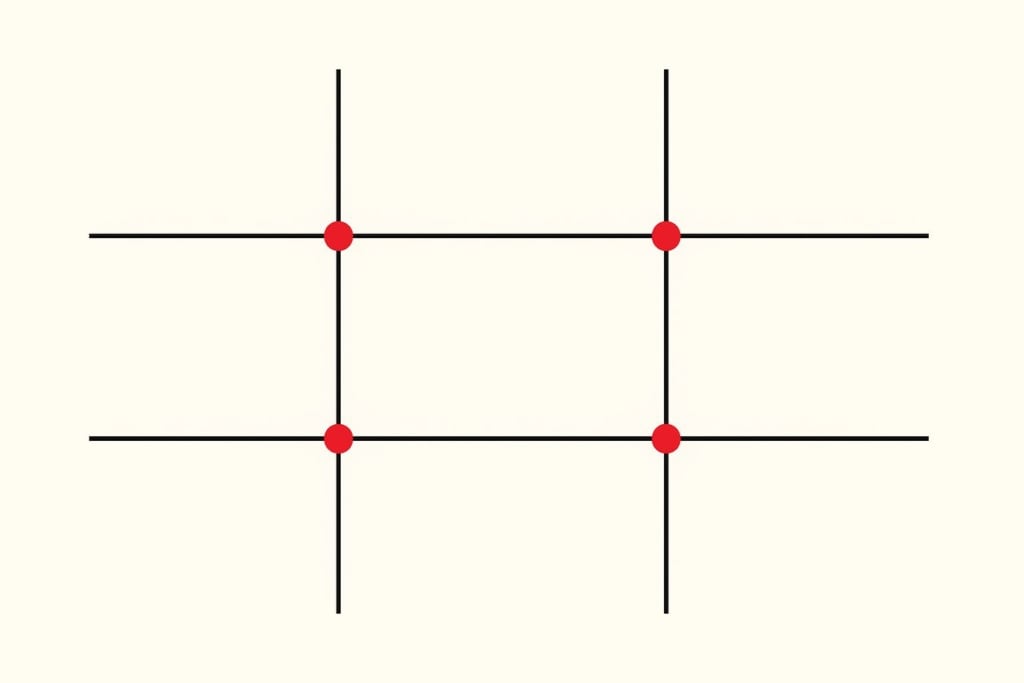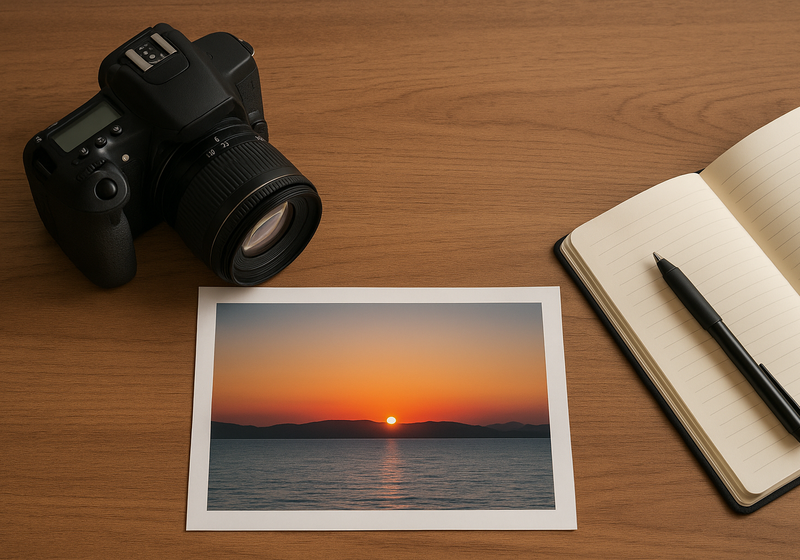Table of Contents
A practical guide with examples, mistakes, and exercises
In photography, composition is what transforms a simple shot into a powerful, visually engaging image.
The rule of thirds is one of the most recognised guidelines for achieving harmony, balance, and energy in your photos.
In this guide, you’ll learn what it is, why it works, how to apply it across different genres, when to break it intentionally, and a few practical exercises to master it.
What is the Rule of Thirds?
The rule of thirds divides your frame into a 3×3 grid — two equally spaced horizontal and vertical lines that create nine equal sections.
The four intersection points are known as power points or points of interest. Placing your main subject or key elements near these points creates a more natural and appealing image than centring them.
Most modern cameras and smartphones include a built-in rule of thirds grid overlay, making it easy to apply while shooting.

Why it works
The rule of thirds leverages how the human eye perceives balance and movement within an image.
Here’s why it’s so effective:
- Visual balance – Moving the subject off-centre prevents static compositions and adds tension and flow.
- Guides the viewer’s eye – The grid lines lead the viewer naturally across the frame.
- Meaningful negative space – Leaving room in front of where the subject looks or moves creates narrative and context.
How to apply the Rule of Thirds (step by step)
- Activate the 3×3 grid on your camera or phone.
- Identify your main subject or focal point.
- Position it along a grid line or, ideally, at one of the four intersections.
- Respect the subject’s gaze or motion direction, leaving space in that direction.
- Balance your subject with the background.
- Reframe or crop during post-processing if needed.
Examples by Photography Type
📍 Landscape
- Place the horizon along one of the horizontal lines: lower if you want to highlight the sky, upper if you want to emphasise the ground or sea.
- Position a tree, rock, or focal object near one of the power points for a more dynamic feel.

📍 Portrait
- Align the subject’s eyes with the top horizontal line.
- Leave open space in the direction of the subject’s gaze or body orientation.
📍 Still Life / Street / Architecture
- Place the main object on a power point.
- Use lines (streets, buildings, light patterns) aligned with the grid to guide the viewer’s eye through the composition.

When not to follow it strictly
Understanding the rule of thirds also means knowing when to break it:
- When the subject or scene requires perfect symmetry (architecture, fashion, geometric patterns).
- When the central composition is more powerful or emotionally striking.
- When you want a creative or conceptual impact by challenging visual expectations.
Rule of Thirds vs. Golden Ratio
While they look similar, they’re not identical:
- The rule of thirds is simpler, quicker, and more intuitive.
- The golden ratio (Fibonacci spiral) is mathematically precise and creates more sophisticated visual harmony.
Both can improve your composition — the rule of thirds is a great starting point; the golden ratio is its advanced evolution.

Common mistakes
- Placing the subject dead centre without a reason.
- Ignoring the direction of gaze or movement, making the frame feel cramped.
- Applying the rule mechanically, without considering story or mood.
Practical exercises
- Analyse your favourite photos and check where the main elements fall relative to the grid.
- Re-crop old images using the rule of thirds and compare before/after.
- Practice with the grid on – take 10 photos on different subjects following the rule consciously.

FAQs
What is the rule of thirds?
A compositional guideline that divides your frame into nine equal parts and suggests placing key elements along the lines or intersections.
When should I use it?
Whenever you want to create visual balance, movement, or a sense of direction in your photo.
Can I apply it in post-production?
Yes — most editing software lets you crop following the rule of thirds grid.
Is it better than the golden ratio?
Not necessarily. The rule of thirds is simpler and more universal; the golden ratio is more complex and artistic.

Conclusion
The rule of thirds is an essential tool for photographers seeking to improve their visual storytelling.
It’s not a strict formula but a flexible framework — once you master it, you’ll know when to follow and when to break it for creative results.
Activate your grid, experiment freely, and let your compositions tell stronger stories.

